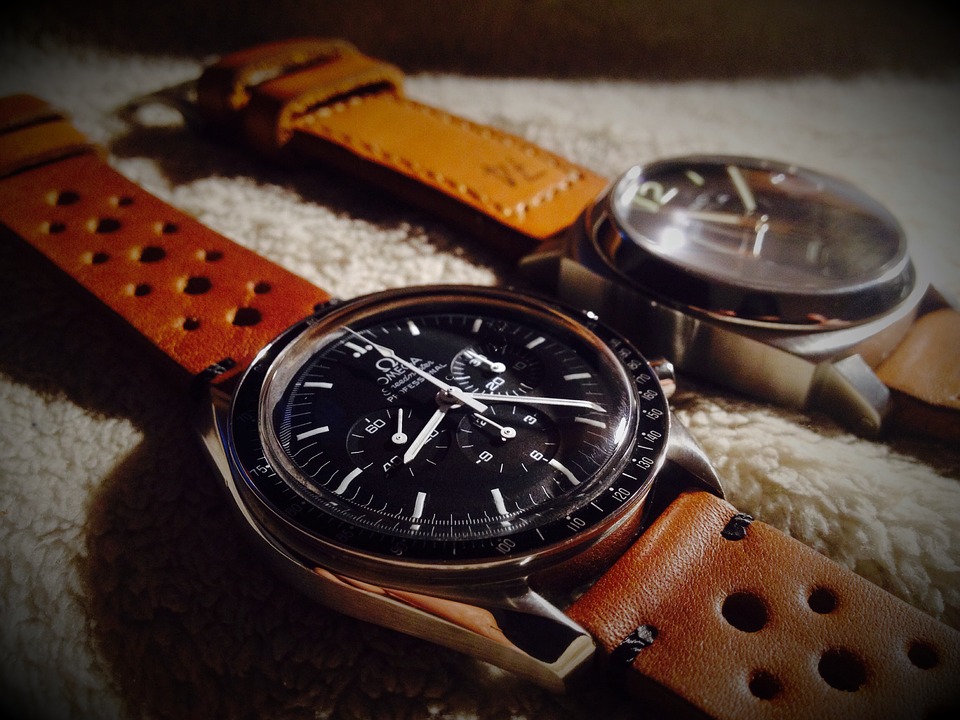
Omega may be one of the most identifiable luxury watch brands worldwide. With its long heritage of watchmaking, to changing the way luxury watches work, and being the only watch brand that’s NASA-certified, Omega is as cushy as one can be in its place in the industry. For more than 170 years, and counting, the brand shows no sign of stopping.
From the Speedmaster down to the Constellation, Omega has a wide array of watch collection to cater to various discerning tastes. One can argue that the company is as prominent as Rolex, which is easily the brand synonymous with luxury watches. For a company this big to still be alive and kicking, strongly we might add, good income management is paramount.
So if you’re wondering – how did Omega last this long? Well, the answer to that is a many-faceted gem. Lots of factors went into making Omega the brand that it is today, but at the heart of its success is producing beautifully crafted aesthetically pleasing and awe-inspiring watches.
Short History
The company that will be known as Omega started as a small watch shop in a family villa in La Chaux-de-Fonds. Louis Brandt, who was 23 years young at the time, was passionate about accuracy in watches, and he set out to make watches that do just that. He worked tirelessly for years until slowly, the shop garnered the reputation of great watchmaking throughout Switzerland.
In 1892, years after Brandt passed away and two of his sons have taken over the company, the shop produced the first minute-repeating wristwatch in the world. Only seen on stopwatches at the time, the technology, which was miniaturized for the size of a wristwatch revolutionized how watchmakers would craft their timepieces for years to come.
Two years after that, the brothers launched what was then another revolutionary caliber movement that shook the standards of watchmaking. The 19-ligne caliber, dubbed as “OMEGA”, or ultimate accomplishment, was the first movement that can be parts-replaced by any watchmaker in the world. Shortly after, the company was renamed Omega Watch Co.
In 1905, Omega watches served as official timekeepers for at least 16 sporting events in Switzerland. This started the company’s history of officially timekeeping sporting events, which still echoes to this day. But it was not until 1932 that the company was tapped to time the entire Olympic Games for the first time. Decades later, it still does.
In a series of really strategic moves to solidify its position in the watchmaking industry, Omega immortalized itself as a brand that will last for a lifetime. So what did Omega do to go this far – survivi§ng the electronic watch movement, the quartz fiasco, and the impending smartwatch takeover all the while keeping a polished image and staying true to the brand’s core values?
Quality watchmaking and faith for mechanical movements.
Go and see any Omega watch and you’ll be instantly impressed at how well-made the watch is. Any watch from the brand is like a painting – unique on its own, and a true work of art. At the heart of the brand is a blind faith in mechanical movements, which ultimately means that making a great mechanical movement watch is the most important thing.
This can be seen throughout all the watches with self-winding capabilities that the brand has produced. Although the company also has embraced the quartz movement, it has done so in a fashion where the integrity of watchmaking hasn’t been compromised. The Omega Speedmaster, for example, is constantly updated to carry the latest in-house movement.
There was a time in the late 1970s that mechanical movement watches were close to becoming obsolete. With the rise of the Japanese quartz movement, the market shifted to battery-operated watches. But Omega stuck to its guns and saw that mechanical watches would soon stage a major comeback.
Perfected their professional line of wristwatches.
In the bleak years of 1957, Omega launched three watches that were geared towards professionals – the Speedmaster, Seamaster 300 and the Railmaster. It was a great reckoning to the watch industry at that time, as these watches showed unfaltering accuracy and specific features that were incredibly helpful for the wearer’s line of job.
It wasn’t long before everyone wants a piece of these professional watches. The Speedmaster became NASA’s go-to watch after a series of rigid tests, beating out two top watch brands in hush-hush testing that even the companies didn’t have any idea about. The Seamaster went on to become one of the world’s most coveted diving watches and the Railmaster, a legend.
Relevant marketing to targeted customers.
Omega, as a brand, knows that it’s a luxury watch company first and foremost. The income bracket needed to have an Omega watch is on the upper tier of the social strata, and the company used that information to great lengths to market their products. One of the most successful collaborations and integration of Omega watches is with the James Bond franchise.
The James Bond movies were a worldwide hit at the time and continuing to do so up until today, and one of the costume designers of the movie had the idea that Commander Bond, a former naval officer, would wear a Seamaster in the blue dial. That casino scene where Bond was wearing an Omega watch wasn’t lost to eagle-eyed viewers. And the rest, as they say, is history.
Takeaway
Omega has withstood the test of time. It’s a watch brand that will be a mainstay in the industry forever. While its contemporaries are making waves on social media and the new digital landscape, Omega is staying true to its roots of subtle integrity.


